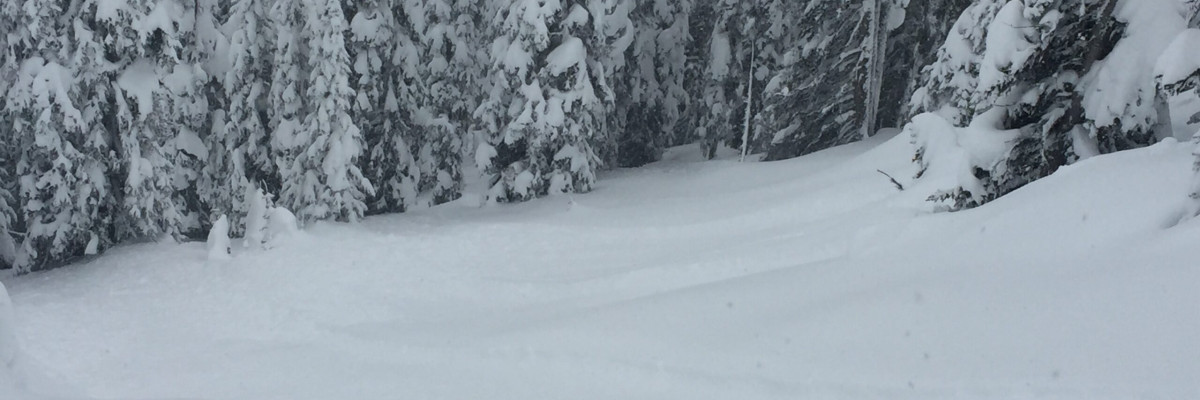An avalanche warning is in effect for the west central Montana backcountry. The current avalanche danger is HIGH. Very dangerous avalanche conditions are present. Travel in avalanche terrain is not recommended today. Human triggered avalanches are very likely, and natural avalanches are likely. Avoid runout zones.
Good morning, this is Travis Craft with an avalanche warning for March 10, 2017. This avalanche warning will expire at 0600 am on March 11, 2017. The warning will be extended or terminated at that time.
This danger rating does not apply to operating ski areas and is the sole responsibility of the U.S. Forest Service.
Weather and Snowpack
Mountain temperatures range from 32 F to 35 F in the region. Winds are 15 mph gusting to 25 mph out of the SSW in the Bitterroot. Point Six, in the northern part of the advisory area, winds are 07 mph with gusts of 32 mph out of the W. The area received 3 to 4 new inches of snow. The new snow had SWE’s ranging from .4 to 1.8 inches of water. In the last 72 hours, the advisory area received significant loading with 2.3 and 4.3 inches of water.
Logan and I went to the Rattlesnake yesterday. We observed several natural slides that occurred during the night and witnessed a natural release while we were out. We got propagation in our pits on the interface of cold, dry snow and the heavier dense snow 2 feet deep. We also got localized cracking and collapsing from our skis. Overnight winds have picked up and are depositing new wind slabs on leeward slopes. Rising snow lines are creating a wet slab and wet loose release problem from 7000 feet and below. A public observation from Lolo Pass found similar data(Lolo Pass Observations). The snowpack is very touchy right now, it is recommended to avoid traveling in avalanche terrain and to avoid runout zones.
The primary avalanche problem is storm slabs. There is continuing loading happening today, and the snowpack needs time to adjust to the new load.
The second avalanche concern is wind slabs. Winds picked up yesterday at 1300 hours and are loading leeward slopes. There are fresh wind slabs deposited on old wind slabs which were touchy to triggers yesterday.
The third avalanche problem is from 7000 feet and below. The snow line is increasing, and some mid and low elevations did not freeze overnight. With the addition of rain to our snowpack look for this additional loading to create widespread instabilities. Wet slabs are very unpredictable. Travel in avalanche terrain is not recommended today. Avoid runout zones.
Avalanche and Weather Outlook
Light snow storms tapering to showers by afternoon and gusty winds. The snowpack will see some additional loading. By Friday night temperatures should be freezing to 4000 feet, and this will help to stabilize the snowpack. The avalanche danger will remain the same. The snowpack needs time to adjust to the new load.
If you are out in the backcountry, please send us your observations, these are very helpful in producing the advisory. Logan will issue an advisory on Saturday, March 11, 2017.
Ski and ride safe.














